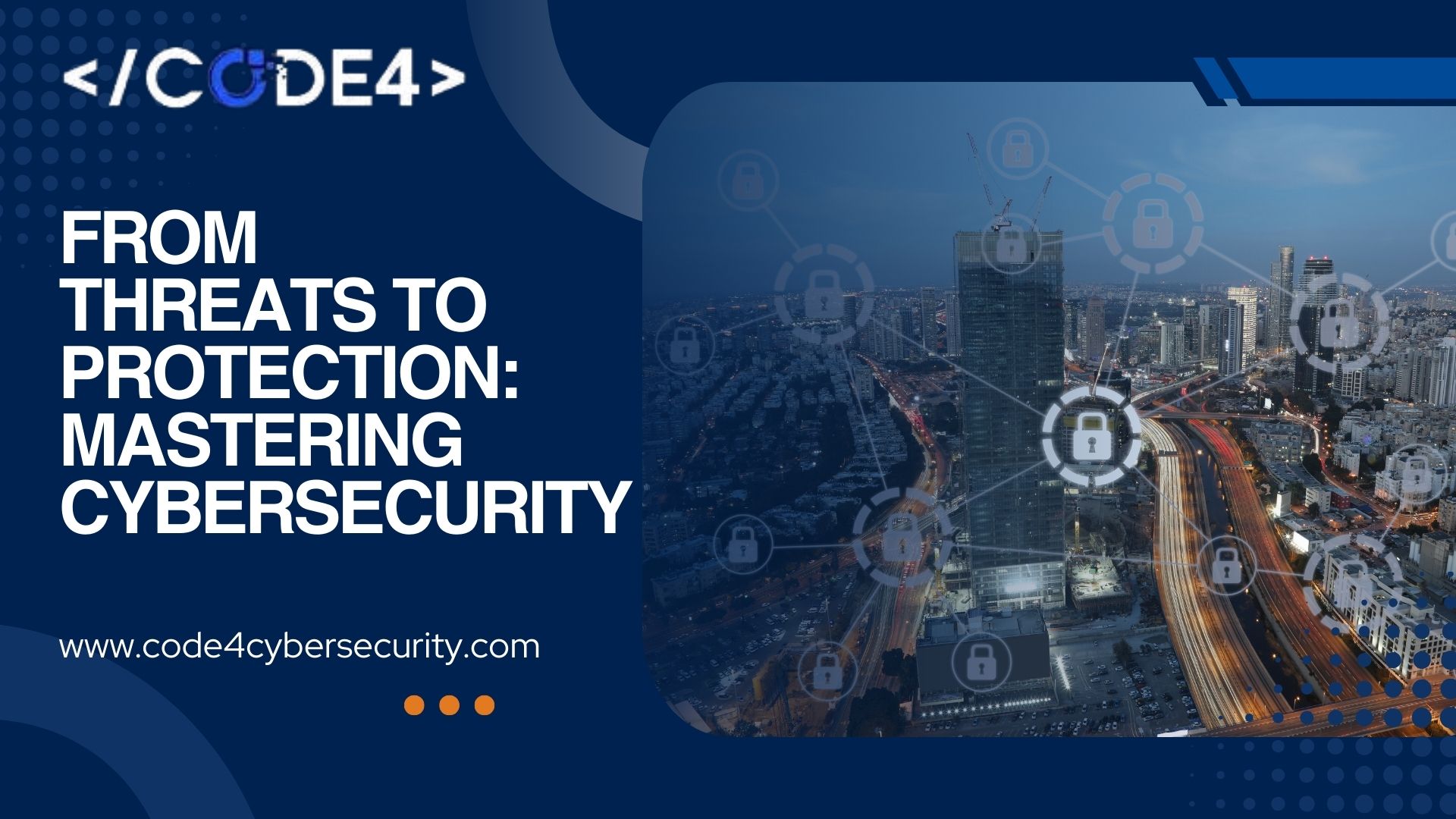In today’s threat-laden digital landscape, mastering cybersecurity is crucial for protecting sensitive information and maintaining operational integrity. This blog aims to guide readers from understanding cyber threats to implementing effective protection strategies, ensuring robust security and cybersecurity services in the face of evolving dangers.
Identifying Cyber Threats
Malware
Malware encompasses various malicious software types, including viruses, worms, and trojans. Viruses attach to legitimate programs and spread when executed, while worms replicate independently across networks. Trojans, disguised as harmless applications, create backdoors for unauthorized access.
Phishing
Phishing attacks trick users into revealing sensitive information through deceptive emails or websites. Common tactics include spoofed sender addresses, urgent messages, and links to fake login pages. Recognizing and avoiding phishing schemes is vital for protecting personal and corporate data.
Ransomware
Ransomware encrypts a victim’s data, demanding payment for its release. This cybercrime can halt business operations and cause significant financial loss. Implementing regular data backups and educating users on safe practices can mitigate ransomware risks.
Advanced Persistent Threats (APTs)
APTs are sophisticated, long-term attacks targeting specific organizations. These threats aim to steal sensitive information over extended periods, often evading traditional security measures. Detecting and defending against APTs requires continuous monitoring and advanced threat intelligence.
DDoS Attacks
Distributed Denial of Service (DDoS) attacks overwhelm systems with excessive traffic, causing service disruptions. These attacks can cripple websites, online services, and even entire networks. Deploying DDoS protection solutions and maintaining scalable infrastructure are essential defense strategies.
Assessing Vulnerabilities
Risk Assessment
Regular security risk assessment is critical for identifying potential threats and vulnerabilities. By understanding and prioritizing risks, organizations can allocate resources effectively and implement appropriate protective measures.
Vulnerability Scanning
Tools and techniques for vulnerability scanning help identify weaknesses in systems. Automated scans can reveal outdated software, misconfigurations, and other security gaps, allowing for timely remediation.
Penetration Testing
Penetration testing simulates cyberattacks to uncover and address security flaws. This proactive approach helps organizations strengthen their defenses and ensure readiness against real-world threats.
Building a Cybersecurity Framework
Defense in Depth
Implementing multiple layers of security, or defense in depth, enhances overall protection. Key components include:
- Network Security: Firewalls, Intrusion Detection Systems (IDS), and Intrusion Prevention Systems (IPS) defend against unauthorized access.
- Endpoint Protection: Antivirus, antimalware, and Endpoint Detection and Response (EDR) solutions safeguard individual devices.
Access Controls
Using strong authentication methods helps prevent unauthorized access. Essential practices include:
- Multi-Factor Authentication (MFA): Adding layers of verification beyond passwords.
- Role-Based Access Control (RBAC): Limiting access based on user roles, ensuring only necessary permissions are granted.
Implementing Best Practices
Strong Password Policies
Creating and enforcing strong password rules is fundamental for cybersecurity. Encourage complex, unique passwords and regular updates.
Regular Updates and Patch Management
Keeping systems and software up to date is vital for addressing vulnerabilities. Regular updates and patch management prevent exploitation of known security flaws.
Employee Training and Awareness
Educating employees on recognizing and responding to threats enhances organizational security. Key initiatives include:
- Phishing Simulations: Conducting regular training exercises to improve awareness and response to phishing attacks.
Incident Response Planning
Preparing for cyber incidents ensures swift, effective action. Critical components include:
- Incident Response Plan: Developing and practicing a comprehensive response plan.
- Recovery Strategies: Ensuring data backups and disaster recovery plans are in place.
Leveraging Advanced Technologies
Artificial Intelligence (AI) and Machine Learning (ML)
AI and ML are transforming cybersecurity with advanced threat detection and response capabilities. Key applications include:
- Behavioral Analysis: Identifying anomalies through behavior patterns.
- Automated Defense Mechanisms: Implementing automated responses to detected threats.
Zero Trust Security
Adopting a zero-trust approach enhances security by assuming no implicit trust. Essential strategies include:
- Microsegmentation: Dividing networks to limit breach impact.
- Continuous Monitoring: Ongoing surveillance of systems for real-time threat detection.
Regulatory Compliance and Standards
Compliance Requirements
Understanding and adhering to regulations such as GDPR and CCPA is crucial for legal and ethical cybersecurity practices. Compliance ensures data protection and organizational accountability.
Industry Standards
Following best practices and frameworks, including NIST and ISO/IEC 27001, helps maintain robust security. These standards provide guidelines for implementing effective cybersecurity measures and continuous improvement.
Conclusion
Mastering cybersecurity involves a comprehensive approach, from identifying threats to implementing robust protection strategies. By adopting these measures, organizations can enhance their security posture and protect against evolving cyber threats. Continuous improvement and vigilance are key to maintaining effective cybersecurity.
Additional Resources
Tools and Links:
- NIST 800-171 CMMC
- Security Risk Assessment
- Wireless Penetration Testing
- Active Directory Security Assessment
- Executive Cyber Security Protection
- Cybersecurity Forensics
- Network Security Assessment
Further Reading:
- “The Cybersecurity Playbook” by Allison Cerra
- “Cybersecurity and Cyberwar” by P.W. Singer and Allan Friedman
Comments Section
We invite you to share your thoughts, experiences, and questions about mastering cybersecurity. Engage with our community and learn from others who are committed to enhancing their cybersecurity practices.






Leave A Comment